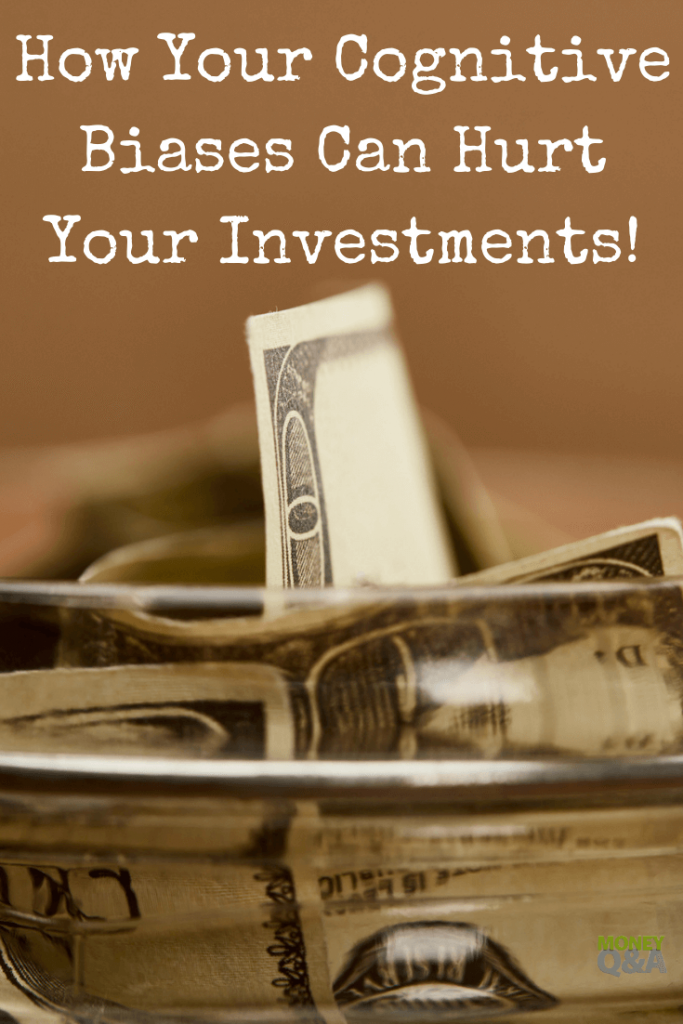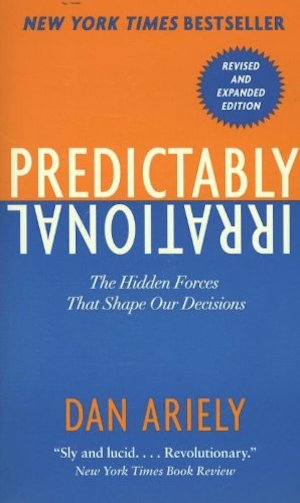In his book, Predictably Irrational: The Hidden Forces That Shape Our Decisions, author Dan Ariely writes, “Wouldn’t economics make a lot more sense if it were based on how people actually behave, instead of how they should behave?” It’s all about our cognitive biases.
In the same vein, investors of all backgrounds and net worth levels generally know how they should invest but nevertheless make bad investment decisions like getting deeply involved in penny stocks, gambling on the potential of a new cryptocurrency, trying to “time the market,” or investing much too conservatively for their age, goals and risk tolerance.
Unfortunately, beginning and seasoned investors alike are prone to making their own unique, seemingly irrational investment decisions. While it may seem obvious to you that timing the market is nearly impossible to do well, others are convinced their knowledge of market indicators and ability to determine when things are headed south supersedes commonsense advice to leave their portfolios as-is.
Many of these irrational decisions can be blamed on cognitive biases, but it’s not enough to be aware of them; you have to actively acknowledge them and develop strategies for overcoming them before they negatively impact your returns. Not sure how or where to start? Let’s explore what cognitive biases are, followed by different techniques for eliminating them from your investment approach.
What Are Cognitive Biases?
According to Very Well Mind, a cognitive bias is a “systematic error in thinking that affects the decisions and judgments that people make.” In other words, it’s a mental mistake – oftentimes related to an unreliable memory or selective attention issues – that we (un)consciously make, which can lead to detrimental outcomes for ourselves, our mental well-being, relationships, and/or decision-making in other areas of life, such as our personal financial management and investments.
Cognitive biases arise when we misinterpret, misjudge or oversimplify information around us. This can involve processing other people’s words or actions, making assessments about larger structures such as the stock market, or feeling helpless in the wake of all the bad news circulating daily. While we like to believe we’re rational beings, humans are incredibly prone to making mistakes in judgment due to cognitive biases distorting our interpretation of reality.
Cognitive Biases that Can Impact Your Investments
Whether we like it or not, cognitive biases are a normal part of human decision-making processes, and pretending they don’t exist – or falling into the trap of the “I’m not biased” bias – won’t do your investment portfolio any good. Identifying and stopping patterns of biased thinking and decision-making is an essential skill for investors of all backgrounds, so here are six of the most common biases to help you get started.
There are many different types of cognitive biases, but those with the greatest potential to hurt your investment portfolio and returns include:
Confirmation Bias
Confirmation Bias is favoring information that aligns with your beliefs (e.g., “6% is a good rate of return – seeking higher returns would be pointlessly risky”) and discrediting or ignoring information that goes against your beliefs (e.g., “10% returns sound too good to be true – I’m sticking to my ‘slow and steady’ approach instead”).
Like the ostrich effect, “confirmation bias” refers to how people tend to privilege information that aligns with their preexisting beliefs while rejecting information that may contradict their beliefs. In other words, people really don’t like recognizing the validity of the information that suggests they could be wrong in some way, which leads to avoidance (ostrich effect) or over-/under-valuing information in biased ways.
In investing, you may be prone to confirmation bias if you invest in companies you like purely from a consumer’s perspective, regardless of the company’s financials, the stock’s historical performance, and/or its measure of risk over the long run. On the flip side, you may also be guilty of confirmation bias if you refuse to consider investments you’re personally unfamiliar with, even if your financial advisor and other reputable sources say these investments are worthwhile additions to your portfolio.
Anchoring Effect
The anchoring effect (also known as “focalism” in psychology) refers to people’s tendencies to over-prioritize the initial information presented to them and make judgments based on those initial findings. For example, someone who invests in a stock at the height of its value may refuse to let go of it if/when the share price dips because they’re fixated on the old “anchor” price as the baseline for making decisions about their investment strategy.
If the stock value were appropriately valued in the first place, the anchoring effect wouldn’t be such a problem because the “anchor” – the price per share you encountered when first investing in that stock – would be more reflective of reality.
Halo Effect
Halo Effect is your personal feelings about a company influence your decision to invest in it, regardless of evidence suggesting it’d be a bad idea (e.g., people who invested in Bernie Madoff’s Ponzi scheme because he seemed like a charismatic, trustworthy guy).
Optimism Bias
Optimism Bias is the belief that you’ll be more successful and less prone to mistakes/misfortune than other people (e.g., “I can worry about saving for retirement later; I’m not ‘too late’ like those other people are”).
Ostrich Effect
One of the most common cognitive biases that come up in personal financial management is the “ostrich effect,” which refers to the avoidance of information that someone perceives to be unpleasant (regardless of whether it actually is or not). The ostrich effect is exemplified by people who “bury their heads in the sand” when it comes to how much debt they’ve accumulated, how much they’ve gone over-budget, or how they should be investing more for retirement but instead convince themselves that other short-term financial priorities should be dealt with first.
In the world of investing, the ostrich effect relates to the “sunk cost fallacy,” which refers to the continuation of an action on the basis that you’ve invested too much to give up on it now. When confronted with the possibility of a poor investment decision, newer investors tend to insist that investment will bounce back so they can keep doing what they’ve been doing all along instead of taking the time to really examine their portfolios and cut their losses.
Self-Serving Bias
We congratulate ourselves and take credit for positive outcomes but blame external causes for negative outcomes (e.g., “I knew Bitcoin was going to be big, which is why I invested early on” and “it’s not my fault the value of Bitcoin crashed – it will come back up when people realize how crypto is an ideal alternative to government fiated currencies”).
Dunning-Kruger Effect
The Dunning-Kruger Effect is not realizing you’re as incompetent about something as you actually are (e.g., “I know how to time the market, so I’m going to base my investment decisions on my intuition.”).
Bandwagon Effect
The bandwagon effect is one of the more well-known cognitive biases that refers to people’s tendencies to engage in the beliefs and actions of others when more people are doing them. We see this happen all the time in finance, from the cryptocurrencies and $GME buying frenzies of early 2021 to the subprime mortgage loans and rush to gold investments of the last economic recession.
Illusion of Validity
This cognitive bias refers to how people overestimate their ability to make accurate, sound predictions, especially if the available data seemingly supports these projections. So many aspects of our lives are driven by data nowadays, but quantitative metrics are rarely as objective as we believe them to be.
In many instances, we do not see “the whole story” but nevertheless make sweeping predictions based on available data (especially if these predictions work favorably for us, as the illusion of validity goes hand-in-hand with confirmation bias, too). By focusing on a company’s fundamentals and being mindful of the inevitability of cognitive biases in human decision-making processes, you’ll be in a much better position to assess and dictate your investment strategy moving forward carefully.
Reactive Devaluation
Last but not least is the cognitive bias of “reactive devaluation,” which refers to diminishing the importance, value, or potential of an investment option simply because we dislike something about it, such as the company or products/services themselves.
An example of this in investing is the dismissal of cryptocurrencies as potentially lucrative investment opportunities (e.g., one Bitcoin was worth just $4,000 in March 2019, and two years later, this figure has risen to $55,000).

How to Overcome Cognitive Biases
The first step to preventing cognitive biases from hurting your investment returns is acknowledging your bias in the first place. This is more difficult in practice than you might think since we typically prefer to think of ourselves as intelligent, rational beings and believe “other people” are the ones with the cognitive bias problems.
Nope, sadly we all have cognitive biases, so start by identifying which ones you could be guilty of, followed by mapping out your investment strategy with a knowledgeable finance professional (or at least someone who has the expertise to determine whether an investment decision is a good idea and someone who has the courage to provide constructive criticism if they believe you may be making a mistake).
If you’re looking for places to keep investment accounts or looking to start trading, you might want to check out investing with M1 Finance, Robinhood, Betterment, or Stash Invest.
M1 Finance simplifies the investment process for beginning and experienced investors alike. M1 Finance does not charge a fee per trade, and it gives you the option of taking more control over your investments if you want them (and less if you don’t). M1 Finance is great for buy and hold investors.
We may not be as rational as we like to believe we are, but that doesn’t mean you have to throw your hands in the air and give up trying to conquer your cognitive biases. By understanding what these biases are, how they influence investment decision-making processes and developing actionable strategies for overcoming those biases, you’ll be in a much better position than someone who turns a blind eye to their own biases and insists that they’re an objective investor.


